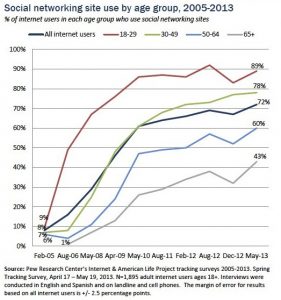I’m always on the lookout for companies that are using social networking technologies to enable business processes other than marketing and customer service. Yesterday, I came across a Financial Times article that mentioned two examples: Red Robin and GE. Here are the excerpts:
Red Robin, the US fast-food chain, used to take 18 months to create a burger [emphasis mine], waiting for sales figures to come in from small trials, [Adam Pisoni, co-founder and chief technology officer at Yammer] said. But by putting the servers in a Yammer group with the people who developed the burger, they could quickly share customer responses in the restaurant, cutting the gestation period to four weeks.
Peter Coffee, vice-president of platform research at [Salesforce.com’s] Chatter, said General Electric was using the service to cut the time spent responding to machine errors. “A machine doesn’t need to turn on a red light, it just updates the right conversation,” he said. “This takes it from a one week response time in a case surrounding a jet engine to bringing it down to single minutes as Chatter could swarm the appropriate expertise immediately.”
These examples point to a key metric that’s emerging for quantifying the value of social networking: Time-to-Resolution.
In other words, by enabling people (across functional groups and organizations) to communicate and collaborate more effectively, and in a more scalable way, companies are able to resolve problems faster, develop products more quickly, and make smarter decisions faster — all of which are imperative in a fast-changing business environment.
What’s the potential value in dollar terms? According to a McKinsey & Company report from July 2012, “[social networking technologies], which create value by improving productivity across the value chain, could potentially contribute $900 billion to $1.3 trillion in annual value across [consumer packaged goods, retail financial services, advanced manufacturing, and professional services]…Two-thirds of this potential value lies in improving collaboration and communication within and across enterprises.”
(For related commentary, see The Perfect Answer to “What’s the ROI of Social Networking?”, A Pulse on Social Networking for Supply Chain Management, and Social Networking and Companies of Tomorrow.)
Also this week, I came across some interesting survey results from the Pew Research Center published in August 2013. It turns out that the use of social networking technologies by Baby Boomers and seniors is growing very rapidly. Back in April 2009, only about 25 percent of 50-64 year olds were using social networking technologies, compared to about 78 percent of 18-29 year olds. Four years later, the gap has significantly closed, with 60 percent of 50-64 year olds now using social networking technologies, compared to 89 percent of 18-29 year olds.
These results coincide with my own experience. Four years ago, when I started conducting executive workshops on social networking, very few supply chain executives (who tend to fall in the Baby Boomer generation) reported using social networking technologies. At most, they had a LinkedIn profile and that’s it. Today, however, many more hands go up when I ask the question, and executives are not only using LinkedIn in more diverse ways, such as participating in group discussions and to search for new career opportunities, they are also using Facebook, Twitter (although still in the minority), and enterprise social networking tools like Yammer and Chatter.
The bottom line is that Baby Boomers are no longer Luddites when it comes to social networking — or at least they are much less so today than they were just a few years ago. And as their experience with social networking increases, both at home and at work, I expect their skepticism and resistance to change will decrease, which will lead to greater adoption of social networking technology across business processes.
That’s my bet, anyway. What’s yours?












